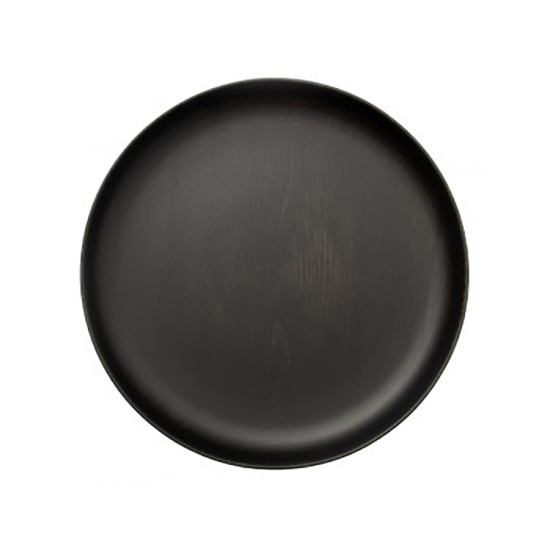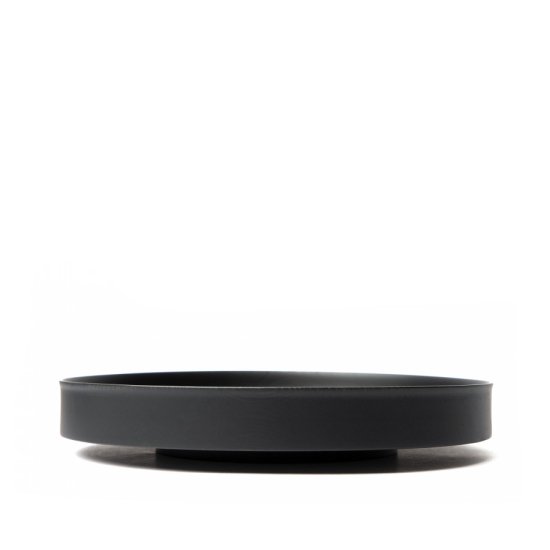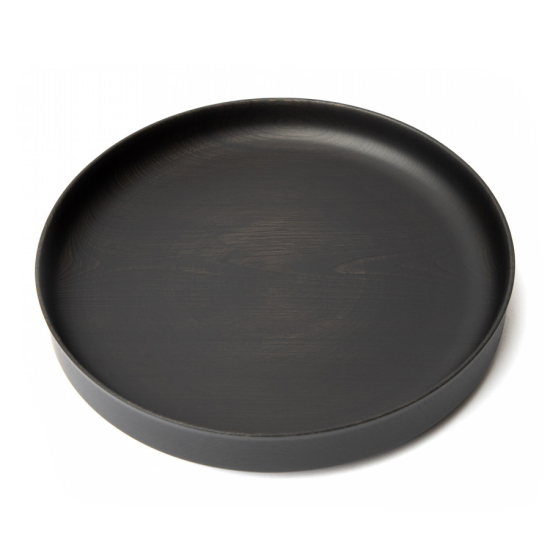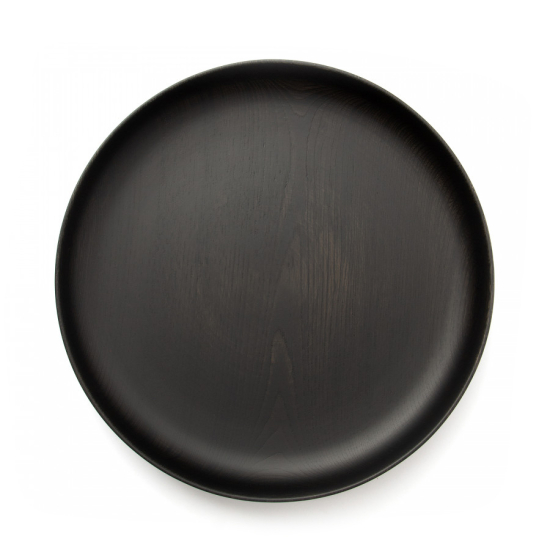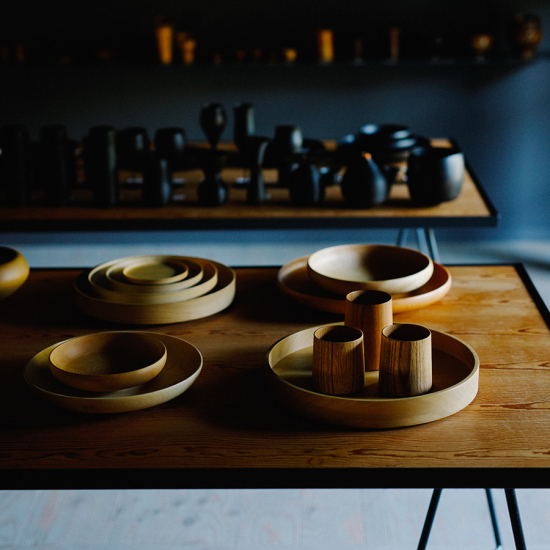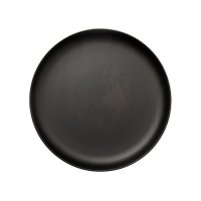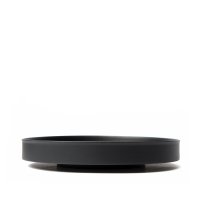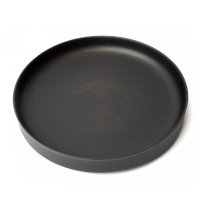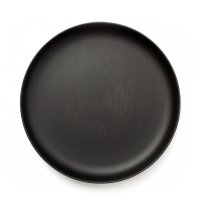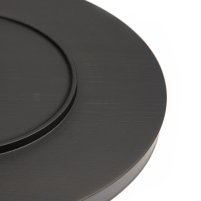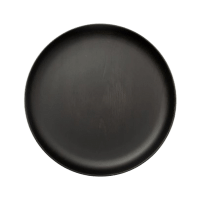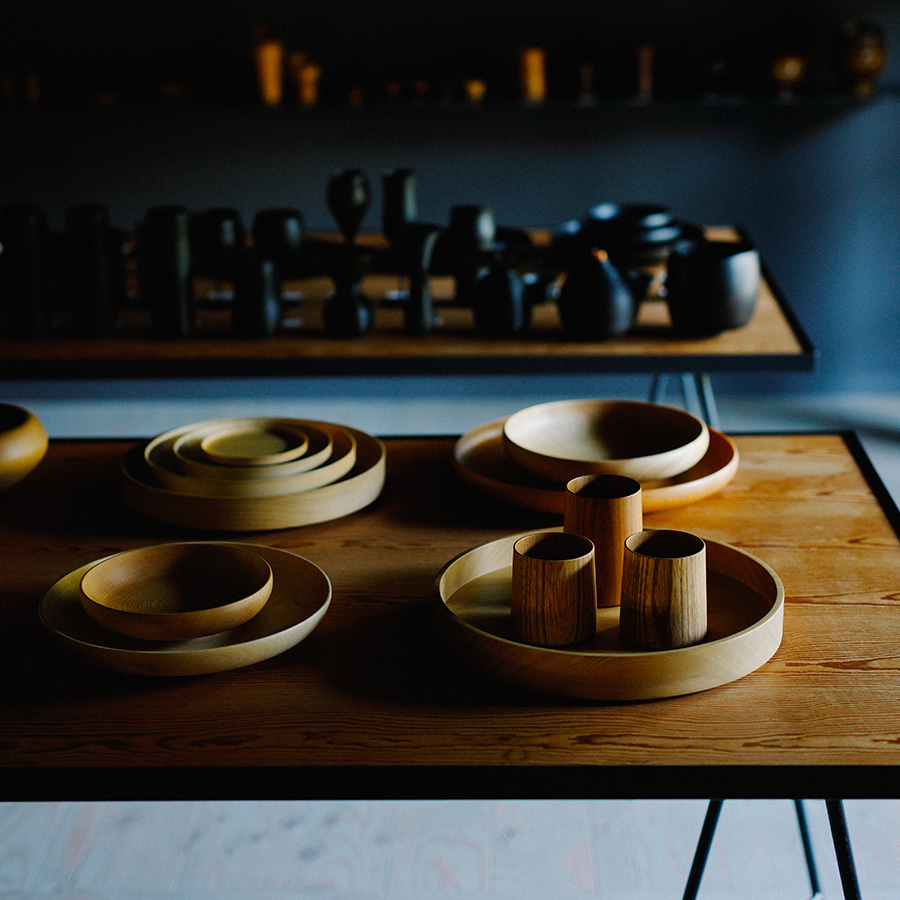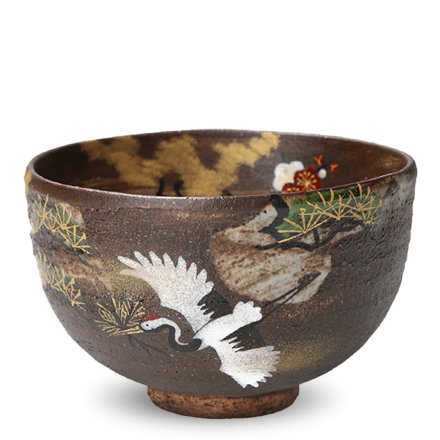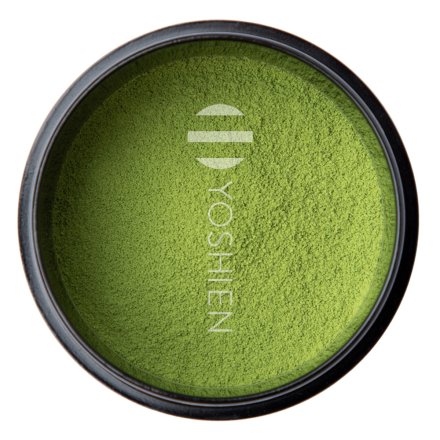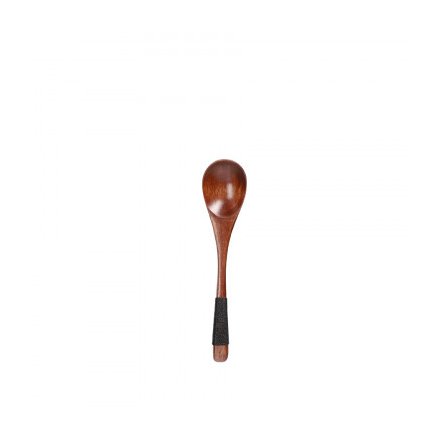Used for thousands of years in Japan to coat objects from crockery to furniture and buildings, urushi is the purified sap of the Asian lacquer tree. When dry, the lacquer is both heat and water resistant, providing protection and strength to underlying materials, very often wood, but also bamboo, paper or leather. In Japanese lacquerware itself can be referred to as urushi as well as shikki (lit. “urushi vessel”), and with the development of acrylic resin in the last century, objects coated in synthetic lacquers, such as food-safe polyurethane, are considered urushi/shikki too. Pure urushi is transparent, while the black and red lacquers most associated with urushi are achieved with the addition of mineral pigments. Over this traditional decorative details such as gold maki-e “sprinkled pictures” or raden “shell inlay” can also be applied.
Tea Tray
Keura Sumi M
Gato Mikio
SKU
5348
A circular obon tea tray with raised edges, hand-turned from a single piece of wood and coated in black urushi lacquer. Made by Gato Mikio, an award-winning Japanese woodworking atelier with over a hundred year's history, based in Yamanaka Onsen: an area long renowned for its fine lacquerware.
| Contents | Black lacquered tea tray |
| Studio/Artist | Gato Mikio |
| Origin | Yamanaka, Ishikawa, Japan |
| Dimensions |
Ø24 x 4cm
|
| Material | Kalopanax septemlobus |
| Finish | Polyurethane |
| Artist's mark | Brand logo on base |
In stock



